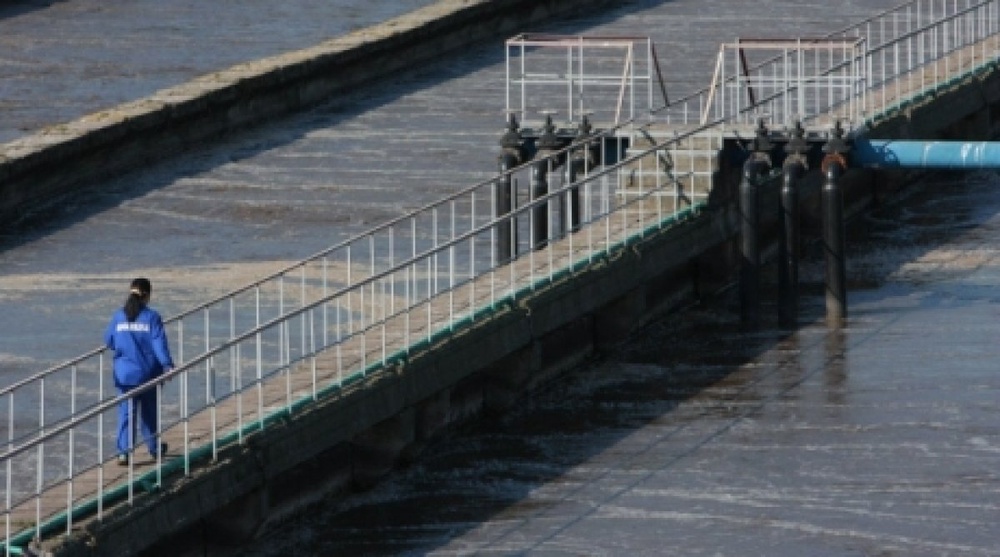
Processed and stabilized sewage waters of Astana city will be discharged into the Yesil (Ishim) River, Tengrinews reports citing Imangaly Tasmagambetov, Akim (Mayor) of Astana, as saying. "Discharge of the city sewage into the Taldykol catch basin will be terminated starting from June, 2014. Sewage water in the amount of 150 thousand cubic meters will be discharged into the Yesil (Ishim) River after being recycled and purified," Imangaly Tasmagambetov said. There are plans to remove the Taldykol catch basin altogether. "As its water table shrinks, works will begin to utilize the bottom silt into geotextile containers and reclaim the drained areas. The project will be implemented in several staged and is due to complete in 2016," he said. Geotextile containers are made from a woven polypropylene geotextile and can be used for coastal and marine engineering, dredging and dewatering. After the project is complete, there will be two water reservoirs with natural boarder and 1400 hectares of dry land suitable for planting a park where the Taldykol catch basin is now located. The works on the removal of Taldykol store basin scheduled up to 2016. 21 billion tenge ($113,5 million) was spent in three years. The Ishim River is the river running through northern Kazakhstan and south-central Russia. It is a left-bank tributary of the Irtysh River. The river rises in the Niyaz Hills in the north of the Kazakh Uplands (Saryarka), flows west through Astana and further on to towns and villages of Kazakhstan, such as Astrakhanka, Atbasar, Zhana-Kiyma, Yesil, Derzhavinks and Sergeyevka. Then the river goes north through Petropavlovsk city in northern Kazakhstan and the flat Ishim Steppe to the Russian town of Ishim, Abatsk and Vikulovo villages before entering the Irtysh River in Ust-Ishim region. Its total length is 1,522 miles (2,450 km), and it drains an area of 55,600 square miles (144,000 sq km). Mainly snow fed, it overflows its banks in spring and becomes shallow in summer. Reporting by Renat Tashkinbayev





Processed and stabilized sewage waters of Astana city will be discharged into the Yesil (Ishim) River,
Tengrinews reports citing Imangaly Tasmagambetov, Akim (Mayor) of Astana, as saying.
"Discharge of the city sewage into the Taldykol catch basin will be terminated starting from June, 2014. Sewage water in the amount of 150 thousand cubic meters will be discharged into the Yesil (Ishim) River after being recycled and purified," Imangaly Tasmagambetov said.
There are plans to remove the Taldykol catch basin altogether. "As its water table shrinks, works will begin to utilize the bottom silt into geotextile containers and reclaim the drained areas. The project will be implemented in several staged and is due to complete in 2016," he said.
Geotextile containers are made from a woven polypropylene geotextile and can be used for coastal and marine engineering, dredging and dewatering.
After the project is complete, there will be two water reservoirs with natural boarder and 1400 hectares of dry land suitable for planting a park where the Taldykol catch basin is now located. The works on the removal of Taldykol store basin scheduled up to 2016. 21 billion tenge ($113,5 million) was spent in three years.
The Ishim River is the river running through northern Kazakhstan and south-central Russia. It is a left-bank tributary of the Irtysh River.
The river rises in the Niyaz Hills in the north of the Kazakh Uplands (Saryarka), flows west through Astana and further on to towns and villages of Kazakhstan, such as Astrakhanka, Atbasar, Zhana-Kiyma, Yesil, Derzhavinks and Sergeyevka.
Then the river goes north through Petropavlovsk city in northern Kazakhstan and the flat Ishim Steppe to the Russian town of Ishim, Abatsk and Vikulovo villages before entering the Irtysh River in Ust-Ishim region.
Its total length is 1,522 miles (2,450 km), and it drains an area of 55,600 square miles (144,000 sq km). Mainly snow fed, it overflows its banks in spring and becomes shallow in summer.
Reporting by Renat Tashkinbayev
Continuation


 +7 (777) 001 44 99
+7 (777) 001 44 99















































